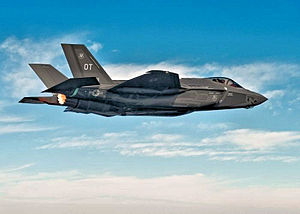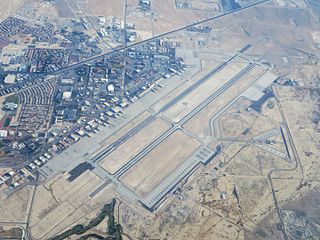
Nellis Air Force Base is a United States Air Force installation in southern Nevada. Nellis hosts air combat exercises such as Exercise Red Flag and close air support exercises such as Green Flag-West flown in "Military Operations Area (MOA) airspace", associated with the nearby Nevada Test and Training Range (NTTR). The base also has the Combined Air and Space Operations Center-Nellis.

Tonopah Test Range Airport, at the Tonopah Test Range is 27 NM southeast of Tonopah, Nevada, and 140 mi (230 km) northwest of Las Vegas, Nevada. It is a major airfield with a 12,000 ft × 150 ft runway, instrument approach facilities, and nighttime illumination. The facility has over fifty hangars and an extensive support infrastructure.

The 64th Aggressor Squadron is a United States Air Force unit. It is assigned to the 57th Adversary Tactics Group at Nellis Air Force Base, Nevada.

The 65th Aggressor Squadron is a United States Air Force unit currently operating the F-35A Lightning II. It is assigned to the 57th Operations Group at Nellis Air Force Base, Nevada.

The 414th Combat Training Squadron is a United States Air Force unit assigned to the 57th Wing, 57th Operations Group at Nellis Air Force Base, Nevada. The 414th is a non-flying organization charged with hosting Red Flag exercises, Air Combat Command's largest Large Force Exercise (LFE).

The USAF Weapons School is a unit of the United States Air Force and United States Space Force, assigned to the 57th Wing and Space Delta 1. It is located at Nellis AFB, Nevada.
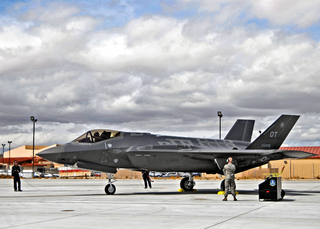
The 53rd Wing is a wing of the United States Air Force based at Eglin Air Force Base, Florida. The wing reports to the United States Air Force Warfare Center at Nellis Air Force Base, Nevada, which in turn reports to Headquarters Air Combat Command.

The 57th Wing is an operational unit of the United States Air Force (USAF) Warfare Center, stationed at Nellis Air Force Base, Nevada.

The 418th Test and Evaluation Squadron is an active United States Air Force unit assigned to the 53rd Test and Evaluation Group, and stationed at Davis-Monthan Air Force Base, Arizona, where it was activated on 1 October 2021.

The 547th Intelligence Squadron is an active United States Air Force (USAF) unit. It is assigned to the 365th Intelligence, Surveillance and Reconnaissance Group, stationed at Nellis Air Force Base, Nevada. The squadron serves as the USAFs center for adversary tactics analysis; develops intelligence threat training programs; defines potential threats to the US, provides intelligence support to Air Combat Command's test and evaluation programs and live-fly exercises.

The United States Air Force Warfare Center (USAFWC) at Nellis Air Force Base, Nevada, reports directly to Air Combat Command. The center was founded on September 1, 1966, as the U.S. Air Force Tactical Fighter Weapons Center. It was renamed the U.S. Air Force Warfare Center in 2005.
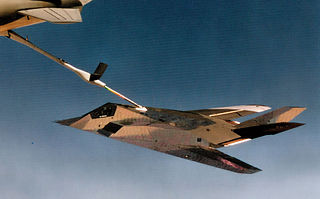
The 4450th Tactical Group is an inactive United States Air Force unit. It was headquartered at Nellis Air Force Base, Nevada, and operationally located at Tonopah Test Range Airport, Nevada. It was inactivated on 5 October 1989.
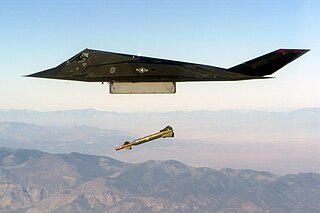
The 417th Test and Evaluation Squadron is an active United States Air Force unit, assigned to the 753rd Test and Evaluation Group and stationed at Edwards Air Force Base, California. Its previous assignment was with the USAF Weapons School at Holloman Air Force Base, New Mexico, where it was inactivated on 14 September 2006.

The 31st Combat Training Squadron is an active United States Air Force unit. It is currently assigned to the Nevada Test and Training Range at Nellis Air Force Base, Nevada.
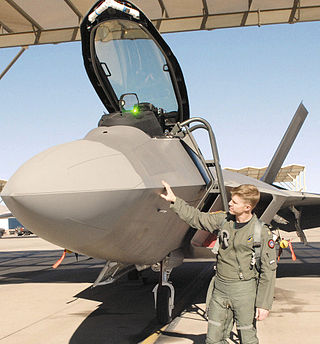
The 59th Test and Evaluation Squadron is a United States Air Force unit. It is assigned to the Air Combat Command 53d Wing, 53d Test Management Group at Nellis Air Force Base, Nevada.

The 433rd Weapons Squadron is a United States Air Force unit, assigned to the USAF Weapons School at Nellis AFB, Nevada.

The 53rd Test and Evaluation Group is a group of the United States Air Force. It is a part of the 53rd Wing, and is headquartered at Nellis AFB, Nevada.

The 57th Operations Group is the operational component of the 57th Wing, assigned to the United States Air Force's Air Combat Command. The group is stationed at Nellis Air Force Base, Nevada.

The United States Air Force's 66th Weapons Squadron is a United States Air Force Weapons School Fairchild Republic A-10 Thunderbolt II instructional flying unit, at Nellis Air Force Base, Nevada.
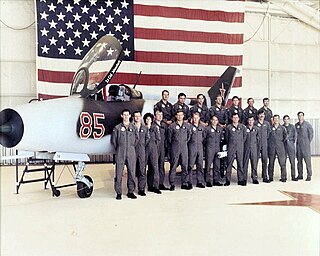
The 4477th Test and Evaluation Squadron was a squadron in the United States Air Force under the claimancy of the Tactical Air Command (TAC). It is currently inactive. The product of Project Constant Peg, the unit was created to expose the tactical air forces to the flight characteristics of fighter aircraft used by the Soviet Union during the Cold War. The declassified history of the squadron shows that it operated MiG-17s, MiG-21s and MiG-23s between 1977 and 1988, but it was not formally disbanded until July 1990.

